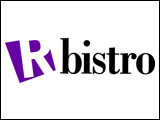The Canadian pork industry needs to diversify its exports beyond the U.S. and manage increasing market uncertainty to get past its vulnerable stage, says the managing director of a leading international strategic consultancy and market research firm.
Canada is the single most vulnerable pigmeat country in the world because it is so heavily dependent on exports, particularly to the U.S., says Andrew Cookson, the managing director of Europe-based GIRA Consultancy & Research.
Rather than continuing to rely on one segment of a volatile world market, Cookson recommends that the Canadian pork industry recognize opportunities to enter growing markets, enhance farmer/processor relationships, become more cost competitive and export more pig meat than live pigs. As progress is being made in those areas, Cookson recommends the industry focus on differentiating Canada’s pork product.
“The name of the game for the next 10 years is managing uncertainty,” he says. “We’re in a world without a floor. The granddaddy who knew what was best for the producer and the consumer has gone on holiday. There’s no one there to help us, but the advantage is Canada can now help itself.”
Cookson recommends a three-step process for managing risk in today’s market. The first step is to ensure lowest-cost competitiveness. “You have no choice but to maximize all measures to improve farm productivity and efficiency,” he says.
The second step is to optimize the current situation. On the production front, this means finishing and slaughtering more pigs in Canada, says Cookson. On the marketing front, it means diversifying the Canadian pork industry’s customer base.
Key to this is recognizing opportunity when it presents itself. Cookson uses the example of China, which recently imported more pork during a period of internal disease outbreak. During that time, U.S. pork marketings to China increased dramatically while Canada’s did not. “Why were they so reactive to the shortage of pork in China and you guys didn’t budge?”
On the other hand, Canada has a strong platform on which to build trade with such growing markets for pork as Russia, China and Mexico. “On an equivalent volume basis, you are just as good as the U.S. at marketing to Russia, and Russia isn’t easy to market to. That is an excellent platform on which to build.”
Finally, the third step is to differentiate Canadian pork, especially against its U.S. counterpart. Right now there is very little to differentiate Canadian pork from U.S. pork, says Cookson. This is not helped by the fact that Canadian pork is priced based on the U.S. market so consumers tend to buy on price rather than product identity.



